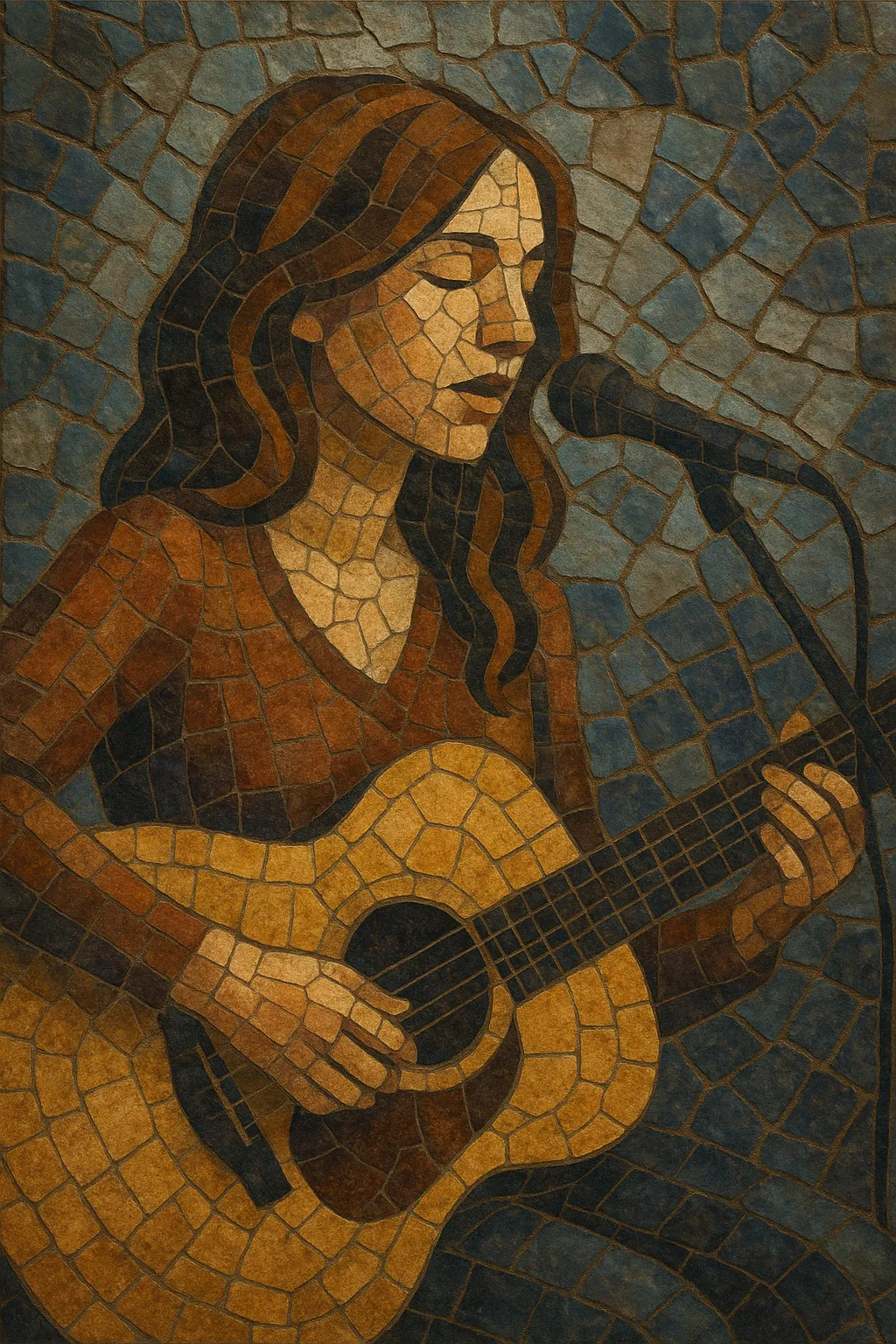
Singer-songwriter is a song-focused style in which the same person writes, composes, and performs their own material, often accompanying themselves on acoustic guitar or piano.
It emphasizes personal voice, lyrical intimacy, and storytelling over elaborate production. Arrangements are typically sparse, allowing the melody, words, and performance nuance to carry the song’s emotional weight.
While rooted in folk and blues traditions, singer-songwriter embraces pop and rock songcraft, producing works that can range from quiet confessional ballads to subtly orchestrated, radio-ready pieces.
The modern singer-songwriter emerged alongside the 1960s folk revival in the United States, when artists began foregrounding personal perspective and social commentary. Drawing on American folk music, blues, country, and the immediacy of rock and roll, performers like Bob Dylan and Joan Baez popularized the model of a single voice accompanying itself on a guitar. The narrative, poetic lyric became central.
In the 1970s, the style moved from coffeehouses to mainstream charts. Joni Mitchell, Carole King, James Taylor, Paul Simon, Neil Young, and others expanded the palette with sophisticated harmony, confessional storytelling, and understated studio craft. Albums became cohesive, autobiographical statements, and the genre’s intimate sound shaped soft rock and adult-leaning radio.
The 1980s brought a more polished pop-rock context, but the core approach persisted in both mainstream and underground scenes. In the 1990s, artists like Elliott Smith and Nick Drake (posthumously recognized) influenced a generation of indie and lo-fi writers, while alt-country and folk-pop scenes folded singer-songwriter sensibilities into band formats and new production aesthetics.
Affordable recording tools, online platforms, and streaming enabled a flourishing DIY culture. Bedroom pop and indie folk drew heavily on singer-songwriter DNA, while global scenes adopted the form in many languages. Today, the term spans coffeehouse minimalism to tastefully produced pop, but its essence remains: a distinctive voice telling personal stories through song.
Start with voice plus a primary harmonic instrument—typically acoustic guitar (fingerstyle or strummed) or piano. Keep arrangements minimal so the lyric and melody remain central; add bass, light percussion, or subtle strings only if they serve the song.
Use diatonic progressions with occasional color (add9, sus2/4, maj7/min7) to enhance emotion. Explore alternate guitar tunings (e.g., DADGAD, drop D) or piano voicings to find distinctive sonorities. Craft melodic lines that trace natural speech rhythms and support the lyric’s phrasing.
Common tempos are moderate, with gentle grooves or rubato passages. Verses carry narrative detail; choruses distill the theme into a memorable hook. Bridges can offer harmonic contrast or a new lyrical angle. Allow space and dynamics to breathe—silence and restraint are expressive tools.
Write in clear, concrete images drawn from lived experience. Balance confessional intimacy with evocative metaphor. Prioritize prosody: align stressed syllables with strong beats, and refine vowel sounds for singability. Edit rigorously—every line should advance story, mood, or character.
Keep production transparent: warm acoustic tones, close vocal miking, and minimal processing. Layer additional parts sparingly—countermelodies, light pads, or percussion should frame the vocal. If recording at home, focus on room tone, mic placement, and performance nuance over heavy post-processing.
Aim for emotional authenticity and clear diction. Use dynamics, phrasing, and subtle ornamentation (slides, grace notes) to underscore meaning. Let imperfections that convey feeling remain; the genre values honesty over polish.

